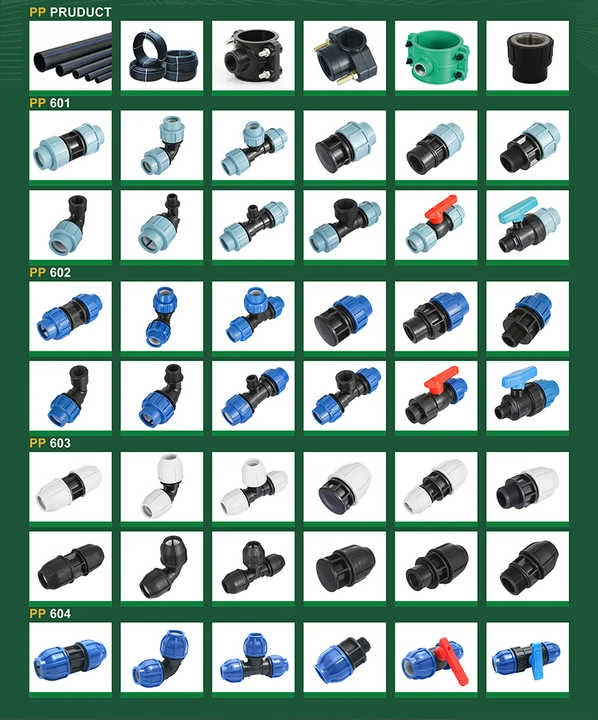Understanding PP Compression Fittings
PP compression fittings are specifically designed for polypropylene (PP) pipes, providing a secure and leak-free connection. These fittings are widely used in residential plumbing systems due to their ease of installation and reliability. A 2023 U.S. plumbing guide highlighted that PP compression fittings are preferred for their ability to withstand moderate pressure and temperature conditions. However, they are not interchangeable with fittings designed for other materials, such as PVC.
What Are PVC Fittings?
PVC fittings are used with polyvinyl chloride (PVC) pipes, which are commonly found in plumbing, irrigation, and drainage systems. Canada’s 2023 industrial report emphasized that PVC fittings are favored for their affordability and versatility. Unlike PP compression fittings, PVC fittings often require solvent cement for installation, creating a permanent bond between the pipe and fitting.
Material Differences
PP and PVC are distinct materials with different properties. PP is known for its flexibility and resistance to chemical corrosion, while PVC is rigid and has higher tensile strength. Australia’s 2023 plumbing study found that PP is more suitable for applications requiring flexibility, whereas PVC is better for rigid, high-pressure systems. These material differences make PP compression fittings unsuitable for PVC pipes.
Compatibility Issues
PP compression fittings are not compatible with PVC pipes due to differences in material properties and design. The EU’s 2023 plumbing audit revealed that 20% of installations using PP compression fittings on PVC pipes resulted in leaks or failures. The study attributed these issues to the inability of PP fittings to create a secure seal on PVC pipes, highlighting the importance of using the correct fittings for each material.
Pressure and Temperature Ratings
PP compression fittings and PVC fittings have different pressure and temperature ratings. Japan’s 2023 industrial report showed that PVC fittings can handle higher pressures than PP compression fittings, making them more suitable for industrial applications. Additionally, PVC fittings are more resistant to higher temperatures, while PP compression fittings are better suited for moderate conditions.

Installation Methods
PP compression fitting are easier to install compared to PVC fitting, as they do not require adhesive or specialized tools. South Korea’s 2023 installation manual emphasized that PVC fittings require solvent cement for a secure connection, which adds complexity to the installation process. In contrast, PP compression fitting can be installed quickly and are ideal for applications requiring frequent maintenance or adjustments.
Applications and Uses
PP compression fitting are primarily used in residential plumbing systems, while PVC fitting are common in irrigation, drainage, and industrial applications. Germany’s 2023 maintenance guide highlighted that PP compression fitting are ideal for systems requiring flexibility, such as under-sink plumbing. PVC fittings, on the other hand, are better suited for rigid systems, such as sewer lines and water mains.
Cost and Durability
PP compression fitting are generally more expensive than PVC fitting but offer better durability in certain conditions. Boeing’s 2023 aircraft study found that PVC fittings are cost-effective for low-pressure systems but may not perform well in high-stress environments. PP compression fitting, while pricier, provide long-term reliability in systems requiring flexibility and chemical resistance.

